

|
| POLSKA | POLAND |
| województwo: Małopolskie | voivodship: Lesser Poland (Cracovia) |
| miasto na prawach powiatu: Kraków | city: Cracow |
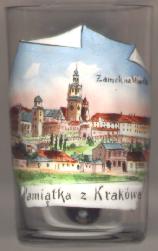 Kraków was founded in the 10th century (first mention in a document from AD 965).
Around 1000 it became the seat of a bishop. Destroyed by the Mongoles in 1241
the settlement was rebuilt and was elevated to a town in 1257. Since 1320 it was
the Polish capital.
In 1525, the "Peace of Kraków" sealed the transformation of the clerical state of the
Teutonic Order into a secular state, the Duchy of Prussia (see Malbork/Marienburg).
1797–1809, following the 3rd Partition of Poland, Kraków was occupied by Austria. From 1809
until 1814 it became part of the Duchy of Warsaw (personal union with the Kingdom of Saxony).
The "Congress of Vienna" made Kraków an independent free state in 1815 (see map),
but Austria regained power in 1846.
At the end of World War I it became part of Poland again (see map), only interrupted by the occupation
by Nazi Germany 1939–1945.
The historic centre of Kraków as listed as a UNESCO World Cultural Heritage in 1978.
Together with Avignon, Bergen, Bologna, Brussels, Helsinki, Prague, Reykjavik and
Santiago de Compostela,
Kraków was selected as European Capital of Culture for the year 2000.
Kraków was founded in the 10th century (first mention in a document from AD 965).
Around 1000 it became the seat of a bishop. Destroyed by the Mongoles in 1241
the settlement was rebuilt and was elevated to a town in 1257. Since 1320 it was
the Polish capital.
In 1525, the "Peace of Kraków" sealed the transformation of the clerical state of the
Teutonic Order into a secular state, the Duchy of Prussia (see Malbork/Marienburg).
1797–1809, following the 3rd Partition of Poland, Kraków was occupied by Austria. From 1809
until 1814 it became part of the Duchy of Warsaw (personal union with the Kingdom of Saxony).
The "Congress of Vienna" made Kraków an independent free state in 1815 (see map),
but Austria regained power in 1846.
At the end of World War I it became part of Poland again (see map), only interrupted by the occupation
by Nazi Germany 1939–1945.
The historic centre of Kraków as listed as a UNESCO World Cultural Heritage in 1978.
Together with Avignon, Bergen, Bologna, Brussels, Helsinki, Prague, Reykjavik and
Santiago de Compostela,
Kraków was selected as European Capital of Culture for the year 2000.
The  Royal Archcathedral Basilica of Saints Stanislaus and Wenceslaus on the Wawel Hill
[left] on the Wawel was built in the 14th century (consecrated in 1359) and
dedicated to Saint Stanislaus, the patron saint of Poland. It was the place of the
coronations of the Polish Kings and also their burial place. Also buried here are the
poet Adam Mickiewics, the revolutionary Tadeusz Kosciuszko and
the statesman Józef Pilsudski. The cathedral has the status of a Basilica minor since time immemorial (probably the 18th century).
In 1978, Karol Cardinal Wojtyła, Archbishop of Kraków, became the first non-Italian pope
(John Paul II) since 1523.
Royal Archcathedral Basilica of Saints Stanislaus and Wenceslaus on the Wawel Hill
[left] on the Wawel was built in the 14th century (consecrated in 1359) and
dedicated to Saint Stanislaus, the patron saint of Poland. It was the place of the
coronations of the Polish Kings and also their burial place. Also buried here are the
poet Adam Mickiewics, the revolutionary Tadeusz Kosciuszko and
the statesman Józef Pilsudski. The cathedral has the status of a Basilica minor since time immemorial (probably the 18th century).
In 1978, Karol Cardinal Wojtyła, Archbishop of Kraków, became the first non-Italian pope
(John Paul II) since 1523.
(see also list of other basilicae minores depicted on glasses of this collection)
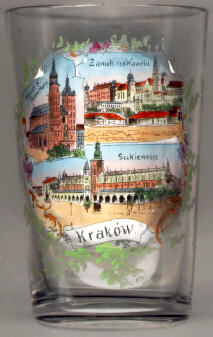

 Wawel castle [near left, no. 4697, and right, no. 280: top right, and left, no. 431]
was begun in the 13th century and subsequently enlarged. Most parts
were erected under King Casimir the Great and King August II. Until 1610 it was the residence
of the Polish kings. In 1611, King Sigismund III transferred the residence to Warsaw.
Wawel castle [near left, no. 4697, and right, no. 280: top right, and left, no. 431]
was begun in the 13th century and subsequently enlarged. Most parts
were erected under King Casimir the Great and King August II. Until 1610 it was the residence
of the Polish kings. In 1611, King Sigismund III transferred the residence to Warsaw.
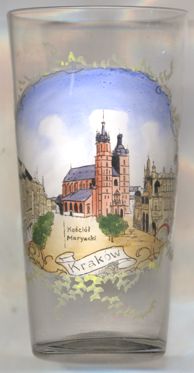
The  church of Saint Mary [near left, no. 4726, and right, no. 280: top left],
begun in 1223 and further enlarged in the 14th century houses a famous altar by the German sculptor Veit Stoß.
church of Saint Mary [near left, no. 4726, and right, no. 280: top left],
begun in 1223 and further enlarged in the 14th century houses a famous altar by the German sculptor Veit Stoß.
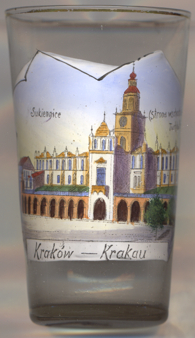
The  Sukiennice (Cloth Hall)
[left, no. 3675; right, no. 280: bottom; and below, no. 247]
was originally created in the 14th century, but was rebuilt in Renaissance style in the 16th century and renewed
1876–1879.
Sukiennice (Cloth Hall)
[left, no. 3675; right, no. 280: bottom; and below, no. 247]
was originally created in the 14th century, but was rebuilt in Renaissance style in the 16th century and renewed
1876–1879.
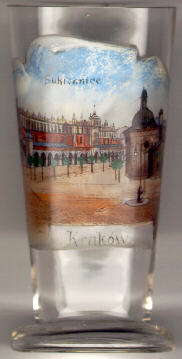
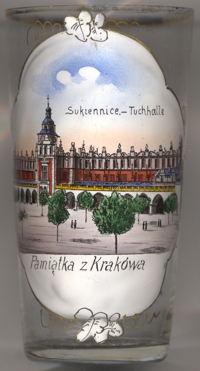
![[scale]](lineal.jpg)